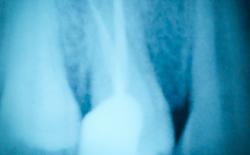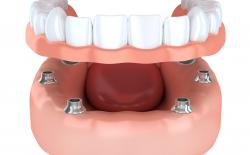Dental caries
Commonly known as “teeth cavities”, dental caries are one of the most common type of infections which dentists come across in their daily practice.
If left untreated, a tooth cavity starts a chain of destructive events which ultimately lead to an irreversible infection, or even loss of the tooth.
What causes teeth cavities?
Healthy teeth are protected externally by a hard, mineralized layer known as the dental enamel.
The enamel protects the internal dentin and pulp layers, which are highly sensitive to changes in oral temperature and pressure.
When regular oral hygiene is ignored for prolonged durations, plaque and tartar deposits on the teeth, which harbors and promotes the replication of bacteria which destroy the tooth enamel.
When these bacteria are allowed to grow, they remove the mineral component from the enamel and expose the underlying soft dentin and pulp tissues.
As a result, there is a sharp pain in the tooth after taking hot or cold drinks.
Are dental caries treatable?
The effects of dental caries can be reversed in early stages of infection.
However, in the advanced stages, the loss of mineral component of the tooth is so great that there is no alternative other than to remove the carious tooth structure and restore it with a suitable filling material.
How to prevent teeth cavities?
Fortunately, it is very easy to prevent the development of teeth cavities. Simply make sure that you brush and floss your teeth at least twice a day, and visit your dentist regularly for a dental checkup, and you’re good to go!
Pulpitis
If teeth cavities are not restored in time, infection tends to get deeper down into the tooth and an inflammation of the pulp tissue is seen.
In the early stages, pulpitis is usually reversible by seeking immediate dental intervention.
However, prolonged delay in treatment results in an irreversible inflammation of the pulp, a condition known as irreversible pulpitis.
What are the symptoms of pulpitis?
- Continuous pain: One of the most common symptoms of pulpitis is the presence of continuous pain which is not relieved through any medication. The pain is typically triggered by taking hot or cold beverages, and tends to last for hours.
- Swelling and pus discharge: In advanced stages of pulpitis, an abscess forms around the tooth root, which can result in swelling and pus discharge from the affected region.
How to treat irreversible pulpitis and dental abscess?
Early stage pulpitis can be easily treated by restoring the tooth with a filling material.
For treating irreversible pulpitis and abscesses, a root canal procedure is required.
During this procedure, access is gained inside the tooth structure, followed by completely removing the infected pulp, cleaning and shaping the root canals, and filling them with an inert material which prevents future re-infection.
Your dentist may also prescribe anti-biotics during treatment to accelerate the healing process.
A video about tooth abscess. Duration: 4:21
Periodontitis
Periodontitis refers to an inflammation of the supporting structures of the tooth, such as the gums and the jaw bones.
The condition starts with a reversible inflammation of the gums known as gingivitis.
Typical symptoms of gingivitis include:
- swelling
- redness of the gums
- tenderness of the gums
- gums bleed easily when brusing or flossing
- bad breath
If gum inflammation is left untreated, it tends to involve the underlying jaw bones and the fibers that attach the teeth to the gums and bones. This condition is known as periodontitis.
Periodontitis marks the irreversible destruction of the gum and periodontal tissues.
The gums start receding from their normal position and an accelerated resorption of bone around the tooth is observed.
This results in loosening of the tooth, which gradually increases until the tooth comes out of its socket.
How is Periodontitis Treated?
Treatment of advanced stage gum and periodontal disease requires removing the plaque and tartar deposits from the tooth with the help of ultrasonic scaling and polishing.
Dentists use a scaler which vibrates at ultrasonic speeds to shred-off adherent calculus on the tooth.
If a tooth is lost due to infection, it needs to be replaced with a denture, bridge or an implant-supported prosthesis.
Pericoronitis
Pericoronitis refers to an inflammation of the soft tissue around a partially or completely impacted (erupted) tooth.
The third molars, or the wisdom teeth, are one of the most commonly impacted teeth inside the oral cavity. However, impaction of other teeth is also possible.
What are the symptoms of pericoronitis?
Typical symptoms of peri-coronitis include:
- pain in the affected region
- limited mouth opening
- foul odor, bad breath
The soft tissue around the impacted tooth appears be swollen and reddish.
How to prevent pericoronitis?
Dentists usually delay treatment until the active phase of inflammation has subsided.
When you have pericoronitis, strict oral hygiene measures should be followed. Rinsing the oral cavity with warm saline water also helps in quick recovery of the problem.
Once the inflammation has reduced, dentists remove the impacted tooth to prevent re-infection.
However, sometimes, if sufficient space is available inside the jaw, dentists force the impacted tooth into normal occlusion by using orthodontic treatment.
The common factor in all types of dental infections are the plaque and tartar deposits which promote bacterial adhesion and growth.
Therefore, most dental infections can be easily prevented by maintaining an impeccable oral hygiene through regular brushing and flossing.
You should also visit your dentist for regular checkups. This is because most types of dental infections are not visible to the naked eye, and can only be diagnosed in x-ray images that are taken at the dentist’s office.
Advice on how to manage pericoronitis - pain from partially erupted wisdom teeth. Duration: 3:24


